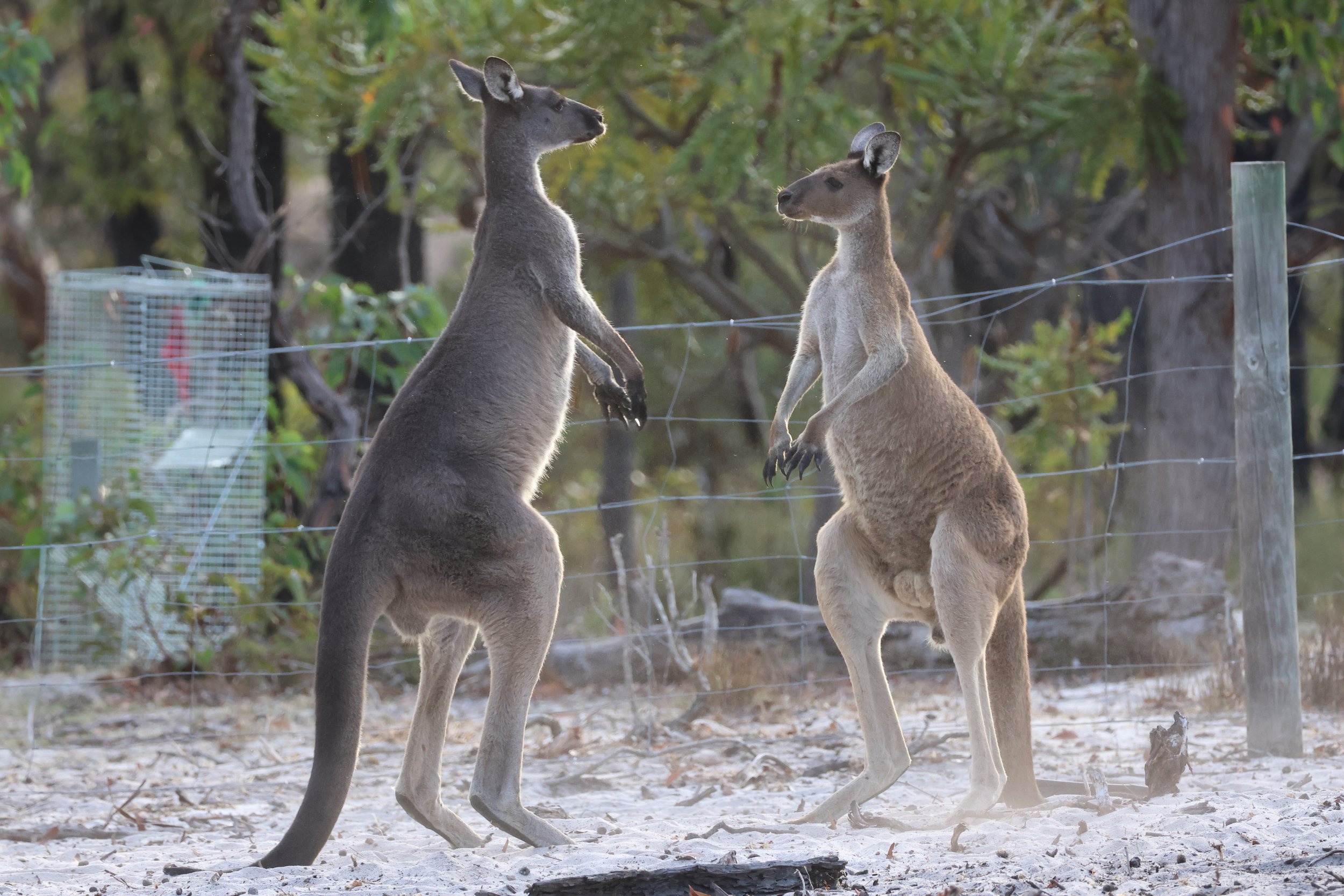Understanding Kangaroo and Joey Communication
Understanding Kangaroo Communication: Nature’s Language in Motion
Kangaroos, the iconic emblems of Australia, have a deeply intricate system of communication, expressed through body language, vocalizations, and social behaviors. From their bounding hops to their maternal instincts, their interactions reveal a complex language unique to the wild.
Body Language: Non-Verbal Expressiveness
Kangaroos rely heavily on their movements and posture to communicate:
Thumping: A kangaroo thumps its feet on the ground to send an urgent signal of danger to the mob.
Ears and Eyes: The positioning of their ears reflects focus and intent, while their eyes can indicate curiosity or even trust, as kangaroos have been observed making eye contact with humans to seek help—an extraordinary display of intelligence.
Hopping Style: Playful hops and joyful side-kicks reflect excitement, while slower hops convey caution or exhaustion.
Vocal Communication: When Silence Breaks
Though kangaroos are generally quiet, they do use vocal sounds for important interactions:
Clicks and Clucks: Used by mothers to call or reassure their joeys.
Growls and Hisses: Express fear, distress, or as a warning to deter threats.
Joey Cries: Joeys have distinct calls that mothers recognise instantly, even in the middle of a chaotic mob or across long distances, reflecting their unique maternal bond.
Play and Learning Through Boxing
Boxing isn’t just a matter of sparring; it’s an essential part of kangaroo communication and development:
Playful Joey Boxing: Young joeys engage in mock boxing matches with one another as a form of play. These playful bouts help them practice coordination, learn social behaviors, and build physical skills in a safe, non-aggressive environment.
Learning from Older Kangaroos: When a joey boxes with an older kangaroo, it often serves as a teaching moment. The older kangaroo helps the joey understand boundaries, hierarchy, and other mob dynamics, ensuring the young one gains valuable life lessons to thrive within the group.
The Undying Bond of Mothers and Joeys
Kangaroo mothers share an unwavering connection with their joeys, showcasing incredible determination and care. For instance, when a mother loses her at-foot joey during a mating chase—a particularly stressful scenario—she doesn’t simply give up. Instead, she spends days searching tirelessly, listening for her joey’s unique cries, and responding with protective urgency. This extraordinary bond ensures joeys remain cared for and safeguarded through challenging circumstances.
Life in a Mob: Communication in the Wild
Kangaroos thrive in groups known as mobs, where communication plays a key role in social dynamics:
Grooming: Strengthens trust and bonds within the mob.
Maternal Guidance: Joeys instinctively follow their mothers, while mothers skillfully guide their young through every stage of development.
Physical Communication: Dominance Through Boxing
When male kangaroos engage in fights for alpha status, it’s not simply a contest of strength—it’s a calculated form of communication. Their movements during these bouts send clear signals to the mob:
Boxing Matches: By grappling with forearms, rearing up on their tails for leverage, and delivering powerful kicks, male kangaroos showcase their physical prowess. This demonstrates their suitability for the alpha position, which comes with responsibilities like breeding rights and protection of the mob. These fights, while intense, rarely result in serious injuries, as their primary purpose is to assert dominance rather than cause harm.
For the mob, this physical communication creates a sense of order, as the alpha male’s position provides security and stability.
Vocal Communication: Growls of Warning and Pain
Male kangaroos also vocalize to express fear, distress, or pain. Growling serves as a warning to others, signaling that the individual is either under threat or experiencing discomfort. However, in extreme pain, male kangaroos often suppress vocalizations altogether.
Silent Stoicism: This lack of vocal expression during moments of severe pain is believed to be a survival strategy. By concealing vulnerability, kangaroos reduce the risk of attracting predators, which might exploit signs of weakness.
Implications for Wildlife Care
Understanding these behaviors is crucial for wildlife carers and conservationists. Boxing matches among males can signify changes in mob dynamics, while growling or suppressed pain responses might indicate injury or distress requiring intervention. At Amaris Wildlife Sanctuary, we pay close attention to these subtle cues to ensure the best care for kangaroos and their unique communication needs.
By interpreting the meaning behind their fights, growls, and stoic displays, we gain insight into their resilience and adaptability in the wild—furthering our appreciation for the intricate ways kangaroos connect with each other and their environment.
Why Understanding Kangaroo Communication Matters
For wildlife carers and conservationists, interpreting kangaroo communication is essential for providing effective care and fostering safer human-animal interactions. Kangaroo behavior offers a unique insight into their emotional intelligence and social complexity. At Amaris Wildlife Sanctuary, we make every effort to understand these subtle cues, ensuring the best possible outcomes for the animals in our care.
By recognising the meaningful ways kangaroos connect—whether through playful boxing, determined searches for lost joeys, or gentle grooming—we celebrate the profound beauty of nature’s language.




